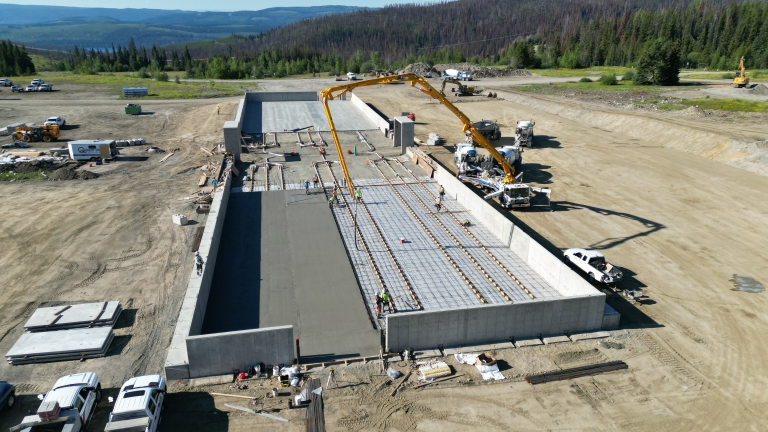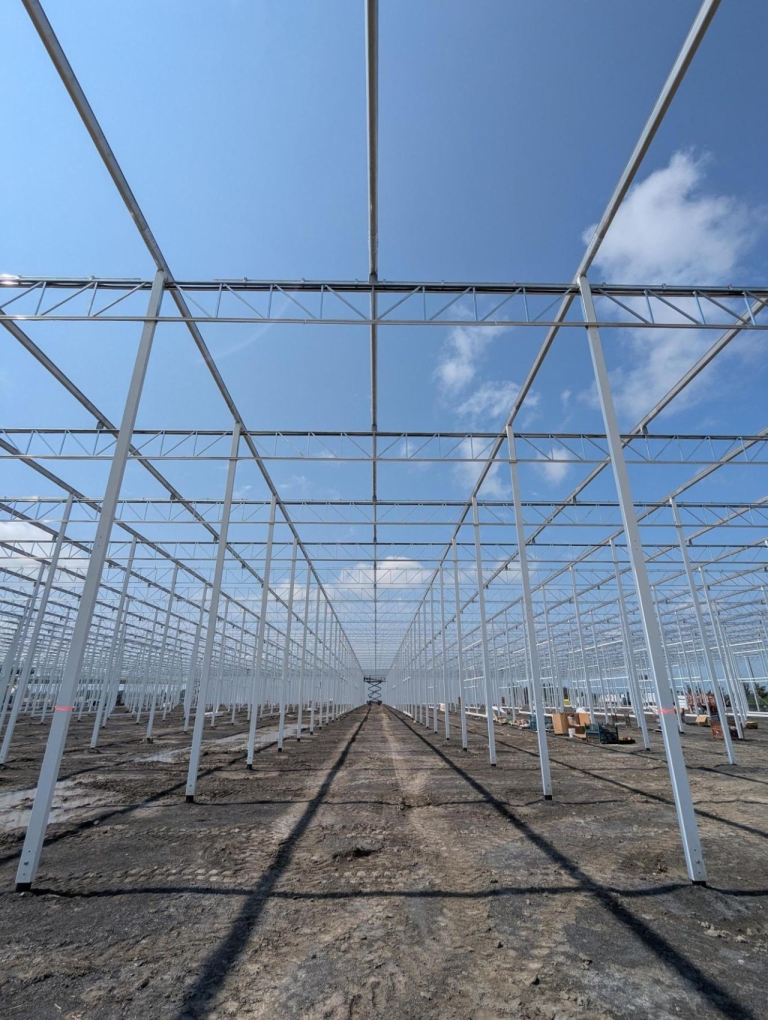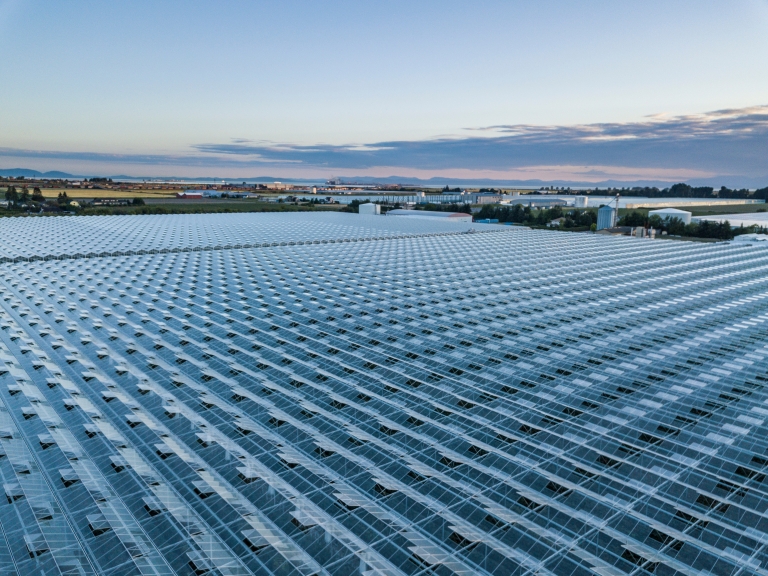The shift from open field to greenhouse cultivation of strawberries offers numerous benefits that can significantly enhance productivity, yield, and quality. This article explores the compelling reasons for transitioning to greenhouse strawberry cultivation, supported by scientific evidence and examples of successful implementations.
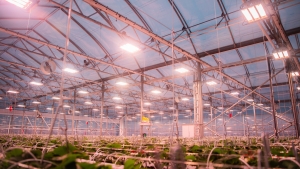
#image_title
Advantages of Greenhouse Cultivation
1. Controlled Environment
One of the primary benefits of greenhouse cultivation is the ability to control the growing environment. Greenhouses provide protection from adverse weather conditions such as heavy rain, frost, and extreme temperatures, which are common challenges in open field cultivation. By maintaining optimal conditions for temperature, humidity, and light, greenhouses can create a more stable and favorable environment for strawberry plants.
A study by López-Marqués et al. (2019) demonstrated that greenhouse-grown strawberries had a 30% increase in yield compared to those grown in open fields due to the controlled environment, which mitigates stress factors that can hinder plant growth.
2. Extended Growing Season in Canada and USA
Greenhouses enable the extension of the growing season, allowing for year-round production of strawberries. This is particularly advantageous in regions with harsh winters or very hot summers, where open field cultivation would be limited to specific seasons such as in Canada.
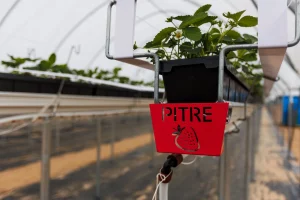
Strawberry plants grown in greenhouses could produce fruit for up to 6-7 months of the year, compared to the 4-5 months typical of open field cultivation. This extended season can lead to increased annual yields and the ability to supply fresh strawberries when they are out of season in other regions, potentially fetching higher market prices.
3. Improved Yield and Quality
Greenhouse cultivation can significantly improve both the yield and quality of strawberries. By providing optimal conditions for growth, greenhouses can enhance fruit size, sweetness, and overall appearance.
A study by Kadir et al. (2006) showed that strawberries grown in greenhouses had higher sugar content and better coloration compared to those grown in open fields. Additionally, the controlled environment reduced the incidence of diseases and pests, leading to healthier plants and higher quality fruit.
4. Reduced Pesticide Use
Greenhouses offer a more controlled environment, which can reduce the need for pesticides. By excluding pests through physical barriers and implementing integrated pest management (IPM) practices, growers can minimize the use of chemical pesticides, leading to more sustainable and eco-friendly production.
For instance, a study by De Villiers et al. (2017) highlighted that greenhouse-grown strawberries required 50% less pesticide application compared to open field strawberries, resulting in lower chemical residues on the fruit and reduced environmental impact.
5. Efficient Resource Utilization
Greenhouses allow for more efficient use of resources such as water and nutrients. Advanced irrigation systems, like drip irrigation, can be easily integrated into greenhouse setups, ensuring precise water delivery to the plants’ root zones and reducing water wastage.
A study by Savvas et al. (2008) found that greenhouse-grown strawberries used 40% less water compared to open field cultivation, thanks to the efficient irrigation systems and reduced evaporation rates. This efficiency is particularly crucial in regions facing water scarcity.
Types of Greenhouses
Greenhouses vary widely in terms of technology and complexity, ranging from low-tech high tunnels to high-tech poly greenhouses and state-of-the-art glass greenhouses.
1. Low-Tech High Tunnels
High tunnels, such as the Harnois Greenhouses TunnelPro Plus, are simple structures covered with polyethylene film. They provide basic protection from the elements and are relatively inexpensive to build. High tunnels can extend the growing season and improve yield, but they offer limited environmental control compared to more advanced greenhouse types.
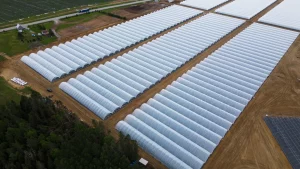
2. High-Tech Poly Greenhouses
High-tech poly greenhouses are covered with advanced polyethylene materials that offer better insulation and light diffusion. These greenhouses, such as the Harnois Greenhouses Gutter Connected often include automated systems for ventilation, heating, and irrigation, allowing for more precise control over the growing environment. This type of greenhouse is suitable for year-round production and can significantly enhance strawberry yield and quality.

3. Glass Greenhouses
Glass greenhouses, such as the Harnois Vermax represent the highest level of technology and environmental control. They provide superior light transmission and can be equipped with the latest climate control systems, including automated shading, heating, cooling, and CO2 enrichment. Glass greenhouses are the most expensive to construct but offer the highest potential for productivity and quality, making them ideal for large-scale commercial strawberry production.
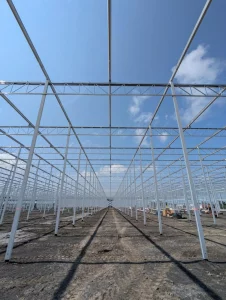
Economic Considerations
1. Initial Investment vs. Long-term Gains
While the initial investment in greenhouse infrastructure can be substantial, the long-term gains often justify the cost of building a commercial greenhouse. The increased yield, extended growing season, and improved fruit quality can lead to higher revenue streams.
A financial analysis by Fraga et al. (2020) revealed that the return on investment (ROI) for greenhouse strawberry cultivation was achieved within three years, with a net profit increase of 20-30% annually compared to open field cultivation.
2. Potential Yield Increase
The potential yield increase in greenhouse strawberry cultivation is significant. For example, in a case study conducted by the University of California, Davis, a greenhouse strawberry operation reported yields of 2.5 kg per plant per season, compared to 1.5 kg per plant in open fields. This represents a yield increase of over 60%, demonstrating the substantial productivity gains achievable through greenhouse cultivation.
3. Market Opportunities
Greenhouse cultivation opens up new market opportunities, particularly in the off-season. By producing strawberries year-round, growers can take advantage of higher market prices when supply from open field operations is low. This can lead to increased profitability and market competitiveness.
A case in point is the success of Mastronardi Produce, a large greenhouse grower in North America, which has capitalized on the ability to supply fresh strawberries during winter months, commanding premium prices and securing long-term contracts with major retailers.
Case Studies of Successful Transitions
Case Study: Driscoll’s Greenhouse Operations
Driscoll’s, a leading global berry producer, has successfully transitioned a significant portion of its strawberry production to greenhouses. By leveraging advanced greenhouse technologies and precision agriculture practices, Driscoll’s has achieved higher yields, improved fruit quality, and a more sustainable production system.
According to a report by Driscoll’s (2018), their greenhouse operations have seen a 35% increase in yield per square meter compared to open field cultivation. Additionally, the controlled environment has allowed for the production of strawberries with consistent size, color, and flavor, meeting the high standards demanded by consumers.
Conclusion
Transitioning from open field to greenhouse strawberry cultivation offers numerous advantages, including a controlled environment, extended growing season, improved yield and quality, reduced pesticide use, and efficient resource utilization. While the initial investment in greenhouse infrastructure can be significant, the long-term economic benefits and market opportunities make it a worthwhile endeavor.
Scientific evidence and real-world examples, such as those from Driscoll’s, underscore the potential for increased productivity and profitability in greenhouse strawberry cultivation. As the demand for high-quality, sustainably produced strawberries continues to grow, greenhouse cultivation presents a viable and advantageous solution for modern strawberry growers.
Sources
- López-Marqués, R. L., et al. (2019). “Greenhouse Strawberry Yield.” Journal of Horticultural Science & Biotechnology.
- Kadir, S., et al. (2006). “Impact of Greenhouse Cultivation on Strawberry Quality.” HortTechnology.
- De Villiers, M., et al. (2017). “Pesticide Reduction in Greenhouse Strawberries.” Crop Protection.
- Savvas, D., et al. (2008). “Water Use Efficiency in Greenhouse Strawberry Cultivation.” Irrigation Science.
- Fraga, H., et al. (2020). “Economic Analysis of Greenhouse Strawberry Cultivation.” Agricultural Economics.
- University of California, Davis. “Case Study: Greenhouse Strawberry Yields.” (2019).
- Mastronardi Produce. “Winter Strawberry Production Success.” (2021).
- Driscoll’s. “Greenhouse Operations Yield Report.” (2018).
- Van der Sluis, B. J., et al. (2016). “Hoogstraten Greenhouse Cooperative Success.” Journal of Horticultural Research.
